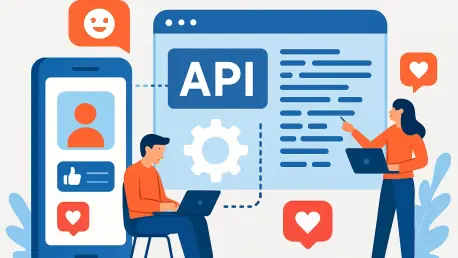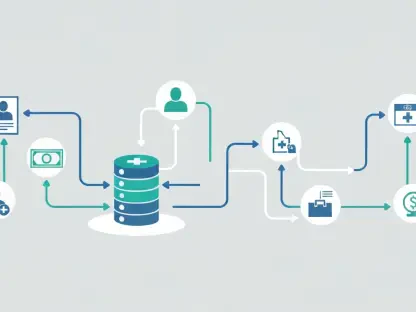In the rapidly evolving tech landscape of today, social media APIs (Application Programming Interfaces) have become indispensable for developers crafting cutting-edge applications that harness the power of platforms like X (formerly Twitter), Instagram, and YouTube. These tools unlock access to vast troves of data, fueling everything from social listening tools to sophisticated marketing analytics platforms. Yet, navigating this space is far from straightforward. Platform policies have grown increasingly restrictive, costs have soared, and compliance demands have intensified, creating a challenging environment for developers seeking reliable solutions. Many find themselves caught between the need for robust data access and the barriers erected by major tech giants. This article aims to cut through the complexity, offering a detailed look at the top API options available and providing insights to help developers make informed decisions for building resilient, data-driven applications in a dynamic digital world.
The The stakes for choosing the right API are higher than ever, especially as major platforms phase out free access tiers and impose stringent approval processes, leaving small developers and startups struggling to keep pace with enterprises that can absorb exorbitant costs. The dream of seamless, affordable integration with social media data feels increasingly out of reach for many. Beyond financial hurdles, sudden policy shifts can disrupt entire projects overnight, while concerns over data quality and legal compliance add layers of risk. Finding an API that balances stability, affordability, and ethical data practices is no small task, yet it remains critical for success. This exploration will not only highlight the leading contenders but also address the broader trends and challenges shaping the API ecosystem, equipping developers with the knowledge needed to navigate this intricate terrain and build applications that stand the test of time.
Understanding the Social Media API Landscape
Challenges of Platform Control and Accessibility
The current state of social media APIs is heavily influenced by platform consolidation, where major tech companies exert tight control over data access, creating significant challenges for smaller players. Giants like Meta and X have shifted their focus to corporate interests, often at the expense of individual developers and smaller teams. Free tiers that once democratized access to valuable data have largely vanished, replaced by premium plans that demand significant financial investment. This trend creates a stark barrier to entry, particularly for startups or independent developers with limited budgets. Beyond cost, cumbersome approval processes and restrictive usage policies further complicate integration efforts. For instance, gaining access to certain endpoints often requires navigating a maze of bureaucratic requirements that can delay projects by weeks or months. This environment underscores the need for alternative solutions that can provide accessible, reliable pathways to social media data without the prohibitive constraints imposed by dominant platforms.
Another dimension of this challenge lies in the unpredictability of platform-driven changes, which can significantly impact developers and their work. Developers frequently face abrupt updates to terms of service or API functionalities that can render existing applications obsolete. Such shifts are not merely inconvenient; they can lead to significant financial losses and wasted development hours. The prioritization of enterprise clients by these platforms means that smaller players often receive little warning or support when disruptions occur. This dynamic has fostered a sense of frustration within the developer community, as the ecosystem increasingly caters to those with deep pockets rather than fostering innovation across the board. As a result, identifying APIs that offer stability amidst this volatility becomes a top priority. The search for dependable tools is not just about technical compatibility but also about finding partners that can mitigate the risks posed by an ever-shifting landscape of platform control.
The Rise of Third-Party API Providers
Amid the tightening grip of major platforms, third-party API providers have emerged as a vital lifeline for developers seeking greater flexibility and access to social media data, which is often restricted by official channels. These alternatives frequently bypass the limitations of official APIs by offering broader datasets and more lenient usage policies, catering to a wider range of project needs. Unlike platform-controlled endpoints, third-party services often aggregate data from multiple sources, providing a unified interface that simplifies integration across different networks. This approach can be a game-changer for developers building cross-platform applications, as it reduces the complexity of managing multiple API connections. However, the sheer variety of third-party options demands careful scrutiny, as not all providers maintain the same standards of reliability or data integrity. The promise of expanded access must be weighed against potential pitfalls to ensure sustainable project outcomes.
While third-party providers offer compelling advantages, their landscape is far from uniform, presenting its own set of challenges that developers must navigate carefully to ensure success. The quality of service can vary widely, with some relying on questionable data collection methods that skirt ethical and legal boundaries. Developers must exercise due diligence to avoid partnerships that could expose their projects to regulatory scrutiny or operational instability. Furthermore, the longevity of these providers is not always guaranteed, as they often operate in a reactive space, adapting to platform changes that could disrupt their offerings. Despite these risks, the trend toward third-party solutions reflects a growing demand for developer-friendly tools that prioritize usability over corporate agendas. This shift signals a broader movement within the tech community to reclaim some autonomy in how social media data is accessed and utilized, pushing for innovation in a space long dominated by restrictive policies.
Key Criteria for Choosing the Right API
When selecting the appropriate API for your project, it’s crucial to consider several key criteria to ensure compatibility and efficiency, especially since the right choice can significantly impact the success of your application development. Factors such as functionality, ease of integration, documentation quality, and support availability should all be thoroughly evaluated before making a decision.
Reliability and Adaptability to Changes
When selecting a social media API, reliability stands as a cornerstone criterion that can determine the success or failure of an application. Platforms are notorious for implementing sudden policy changes that can break integrations without warning, leaving developers scrambling to adjust. A vivid example is the impact of Instagram’s API restrictions a few years back, which caused numerous social monitoring tools to cease functioning almost overnight. Such incidents highlight the importance of partnering with API providers that demonstrate a proven ability to adapt swiftly to disruptions. Whether it’s through proactive monitoring or rapid response mechanisms, the capacity to maintain service continuity in the face of platform volatility is non-negotiable. Developers must seek out solutions that not only promise uptime but also deliver on that commitment through robust infrastructure and agile update processes.
Beyond mere uptime, adaptability encompasses how well an API provider anticipates and navigates the broader ecosystem shifts, ensuring that developers can rely on consistent performance. This includes staying ahead of platform updates, ensuring compatibility with new features, and mitigating the impact of deprecated endpoints. A reliable API acts as a buffer, absorbing the shocks of external changes so that developers can focus on building rather than firefighting. This aspect is particularly crucial for long-term projects where consistency over months or years directly correlates with user trust and application viability. The market now demands providers that go beyond reactive fixes, offering strategic foresight to preempt issues before they arise. By prioritizing APIs with a track record of resilience, developers can safeguard their applications against the unpredictable whims of social media platforms, ensuring that their tools remain functional and competitive in a fast-moving digital environment.
Data Quality and Comprehensive Access
The quality of data provided by an API is a fundamental concern that directly impacts the effectiveness of any application, and developers must navigate this landscape with care. Official APIs, while often reliable in terms of accuracy, frequently impose strict limits on the scope of data available, restricting developers to narrow datasets that may not meet project requirements. This gap has driven many to explore third-party options that promise more comprehensive, real-time access to social media insights. However, the allure of broader data must be tempered by caution, as some providers resort to dubious scraping techniques that compromise both accuracy and legality. High-quality data—timely, precise, and relevant—is essential for applications to deliver meaningful results, whether for market analysis or user engagement tracking. Developers must prioritize APIs that guarantee data integrity while steering clear of sources that could introduce errors or inconsistencies into their systems.
Equally important is the breadth of access an API offers across platforms and data types, ensuring developers can work efficiently without the burden of managing multiple tools. A fragmented approach, where developers must juggle multiple APIs to cover different networks, can lead to inefficiencies and increased complexity. Comprehensive access through a unified interface not only streamlines development but also enhances the depth of insights an application can provide. Yet, this must be balanced against the risk of over-reliance on providers whose data collection methods might violate platform terms or privacy standards. The challenge lies in identifying APIs that strike the right balance—offering extensive, real-time data coverage without exposing projects to operational or regulatory hazards. By focusing on providers with transparent methodologies and a commitment to ethical practices, developers can build applications that leverage rich datasets while maintaining trust and compliance in a highly scrutinized digital space.
Pricing Models and Scalability
Cost considerations play a pivotal role in the selection of social media APIs, as pricing structures can make or break a project’s financial viability. Official APIs often come with steep entry fees that escalate rapidly with increased usage, placing them out of reach for smaller developers or experimental initiatives. This pricing model caters primarily to enterprises with substantial budgets, leaving startups and independent creators grappling with limited options. Transparent and affordable pricing is crucial, allowing developers to predict costs accurately and plan for growth without the fear of sudden financial burdens. The market increasingly demands solutions that offer fair, tiered plans accommodating a range of usage levels, from prototype testing to full-scale deployment, ensuring that innovation is not stifled by prohibitive expenses.
Scalability ties directly into pricing, as developers need APIs that can grow alongside their applications without triggering unaffordable cost spikes. A scalable API provides the flexibility to handle increased data demands or user traffic as a project expands, maintaining performance without necessitating a complete overhaul. This aspect is particularly vital for applications aiming to capture a growing audience or process larger datasets over time. However, many official APIs impose rigid quotas or punitive overage fees that hinder such expansion, forcing developers to seek alternatives with more adaptable structures. The ideal provider offers a clear path for scaling, with pricing that aligns with usage patterns and predictable increments. By focusing on APIs that support both current needs and future ambitions, developers can build sustainable projects that thrive without the constant threat of budget constraints derailing progress.
Compliance with Privacy and Platform Policies
Navigating the maze of privacy regulations and platform policies is a critical aspect of API selection that cannot be overlooked. With data protection laws becoming more stringent globally, developers face heightened scrutiny over how social media data is accessed and utilized. Choosing an API provider that adheres to these regulations, as well as the specific terms set by platforms, is essential to avoid legal repercussions or account suspensions. Non-compliance can result in severe penalties, ranging from fines to complete project shutdowns, making it imperative to partner with providers that prioritize ethical data handling. This includes transparent policies on data sourcing and robust mechanisms to ensure user consent and data security are respected at every stage of integration.
The complexity of compliance extends beyond legal frameworks to the ethical implications of data usage, requiring developers to navigate a challenging landscape. They must ensure that their chosen API does not engage in practices that could undermine user trust or violate platform guidelines, such as unauthorized data collection or misuse of personal information. This requires thorough vetting of providers to confirm their commitment to best practices in data stewardship. Additionally, as regulations evolve, API providers must demonstrate agility in updating their practices to remain compliant, shielding developers from the burden of constant legal monitoring. By aligning with providers that embed compliance into their core operations, developers can focus on innovation without the looming threat of regulatory pitfalls. This focus on ethical integration fosters sustainable application development in an era where data privacy is a paramount concern for users and authorities alike.
Top Social Media APIs for Developers
Official APIs: Strengths and Limitations
Official APIs, such as Twitter API v2, Meta Graph API, Reddit API, and YouTube Data API, offer direct access to platform data backed by robust infrastructure, making them a go-to choice for certain use cases. These tools provide unparalleled compatibility with their respective platforms, ensuring that data is sourced straight from the origin with minimal risk of discrepancies. For enterprises or projects requiring deep integration with specific ecosystems—like Google services through the YouTube Data API—these APIs deliver reliability and structured access that can be hard to match. However, their appeal is often limited to well-funded entities, as the costs associated with usage can be prohibitively high. Developers working on smaller scales frequently find themselves excluded by pricing models that prioritize corporate clients over individual innovators, creating a significant accessibility gap.
The limitations of official APIs extend beyond cost to include restrictive policies that hinder flexibility, making them challenging for many developers to use effectively. For instance, the Meta Graph API imposes a rigorous approval process that can delay or derail legitimate projects, while the Reddit API’s rate limits pose challenges for applications needing frequent data pulls. The Twitter API v2, despite its comprehensive data offerings, comes with complex authentication requirements and steep pricing tiers that escalate with usage. Similarly, the YouTube Data API, while effective for metadata access, becomes expensive once free quotas are exceeded, particularly for data-intensive applications. These constraints often render official APIs impractical for developers seeking scalable, budget-friendly solutions. The focus on enterprise needs over broader community support means that many must look elsewhere for tools that align with diverse project goals, highlighting the need for alternatives that address these shortcomings.
Third-Party Standouts: Data365 as a Leader
Among third-party API providers, Data365 emerges as a standout option for developers seeking a balance of reliability and comprehensive access. Boasting an impressive 99.9% uptime, this provider demonstrates a commitment to stability through sophisticated monitoring and rapid adaptation to platform changes. Its ability to deliver real-time data across multiple major platforms via a unified API structure simplifies the integration process, reducing the need for developers to manage disparate endpoints. This comprehensive coverage is paired with scalable infrastructure, making it suitable for projects ranging from early-stage prototypes to enterprise-level applications. Data365’s focus on maintaining service continuity even amidst platform disruptions offers a level of assurance that is often lacking in official API offerings, positioning it as a reliable partner for developers navigating a volatile digital landscape.
Further setting Data365 apart is its developer-centric approach, which includes transparent pricing and robust support mechanisms. Unlike many official APIs where costs can spiral unpredictably, this provider offers clear, tiered plans that allow for accurate budgeting and scalability as project needs grow. Additionally, its emphasis on customer-focused support—through detailed documentation and responsive assistance—streamlines the integration process, saving valuable development time. Serving over 200 clients, including cybersecurity firms and marketing agencies, Data365 has built a proven track record of aligning with developer success. This contrasts sharply with platform-controlled APIs that often prioritize internal agendas over user needs. By addressing key pain points like cost, adaptability, and data access, Data365 represents a compelling alternative that empowers developers to build innovative applications without the constant threat of disruption or financial strain.
Prioritizing Developer Experience
In the rapidly evolving world of technology, prioritizing developer experience is crucial for fostering innovation, enhancing productivity, and ensuring the creation of high-quality software products that meet user needs effectively. A positive developer experience not only improves job satisfaction but also reduces turnover and attracts top talent to organizations.
Importance of Documentation and Support
The role of developer experience in API selection cannot be overstated, with documentation and support serving as critical components that influence integration success. High-quality documentation—featuring clear guides, working code examples, and detailed endpoint descriptions—can significantly reduce the learning curve associated with implementing an API. When developers can quickly understand how to utilize a tool, they save time that would otherwise be spent troubleshooting or seeking external resources. Responsive support further enhances this experience, providing a safety net for when issues arise during development or deployment. Providers that invest in these areas demonstrate a commitment to user success, recognizing that seamless integration is as important as the data itself. This trend is gaining momentum as the market becomes more competitive, with APIs that prioritize ease of use standing out among a crowded field.
Beyond initial setup, robust support systems ensure that developers can address challenges throughout the lifecycle of their applications. Whether it’s resolving unexpected errors or optimizing data queries for performance, having access to knowledgeable assistance can make the difference between a stalled project and a thriving one. This is particularly vital in an environment where platform policies shift frequently, often requiring rapid adjustments to maintain functionality. Providers that offer proactive updates, community forums, or dedicated support channels empower developers to navigate these changes with confidence. The growing emphasis on developer experience reflects a broader shift in the industry toward tools that not only deliver data but also foster an ecosystem of productivity. By aligning with APIs that value clear communication and reliable assistance, developers can focus on innovation rather than wrestling with integration hurdles.
Building Sustainable Partnerships
Looking ahead, the future of social media API development hinges on forging sustainable partnerships with providers that prioritize long-term collaboration over short-term gains. In a landscape marked by constant change, developers benefit immensely from aligning with APIs that demonstrate adaptability and a genuine focus on customer needs. This means selecting partners who not only react to platform disruptions but also anticipate them, ensuring that applications remain resilient over time. Such relationships are built on trust, transparency, and a shared commitment to success, where the provider’s goals align with those of the developer community. This approach contrasts with the often transactional nature of official API interactions, offering a more stable foundation for projects that aim to endure in a volatile digital space.
Sustainable partnerships also involve a mutual investment in growth, where providers support developers through evolving challenges and expanding opportunities. This could manifest as customized solutions for unique use cases, regular updates to maintain compliance with new regulations, or scalable infrastructure that accommodates increasing demands. By fostering an environment where feedback is valued and acted upon, API providers can create a collaborative dynamic that drives innovation. Developers, in turn, must seek out partners with a proven track record of navigating the complexities of social media data access while maintaining ethical standards. Choosing APIs that view success as a shared outcome rather than a unilateral benefit ensures that applications are built on a solid foundation, ready to adapt to whatever changes the digital landscape may bring in the coming years.









